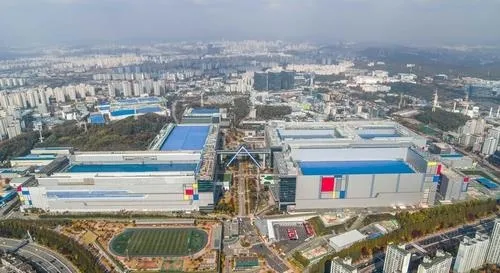How is Samsung Planning to Reclaim Its HBM Leadership?

Synopsis
Key Takeaways
- Samsung Electronics is aiming to regain its position in the HBM market.
- Recent executive meetings have focused on addressing sales strategies and production schedules.
- Samsung's HBM chips are currently facing quality test challenges from Nvidia.
- SK hynix has overtaken Samsung in global DRAM market share for the first time.
- The company is planning to mass-produce the next-generation HBM4 in the second half of the year.
Seoul, June 22 (NationPress) Samsung Electronics is actively working to restore its position in the premium high bandwidth memory (HBM) market following a decline in its leadership status during high-level strategy meetings aimed at the second half of the year.
The biannual meetings, which took place over three days starting Tuesday, were led by division heads and addressed various regional and business-specific challenges, along with outlining sales strategies and performance objectives for the upcoming months, according to a report from Yonhap news agency.
During the session on Wednesday, which was spearheaded by its critical semiconductor division, the focus was on HBM sales strategies and production timelines, as demand for memory chips continues to surge, largely influenced by the recent advancements in generative artificial intelligence (AI), as per insider sources.
Reports indicate that Samsung Electronics' HBM chips have faced difficulties in passing quality tests set by Nvidia Corp., hindering the company's entry into the global HBM supply chain, currently led by Nvidia, SK hynix Inc., and TSMC.
This setback resulted in Samsung Electronics being surpassed by its competitor SK hynix in global DRAM market share for the first time in the first quarter of this year.
Data from global market research firm Omdia reveals that SK hynix's market share climbed to 36.9 percent in the first quarter of this year, while Samsung Electronics' share dropped to 34.4 percent.
The company is also evaluating its strategy to initiate mass production of the next-generation HBM4 in the latter half of the year, a pivotal move expected to help regain its competitive advantage.
In a related development, LG Electronics announced on Sunday that it will install large light-emitting diode (LED) digital displays at Roig Arena, a new multipurpose facility in Spain, as part of its strategy to broaden its global sports entertainment business.
The company plans to feature a massive exterior LED screen, referred to as "The Eye," alongside a central scoreboard, a 76-meter-long main display, and an LED ribbon screen encircling the stadium's interior.
Roig Arena, designed to accommodate a multitude of events including sports and entertainment, is under construction and is slated to open in September, becoming the new home for the Valencia Basket team.
LG Electronics is enhancing its presence in the global commercial display market by providing large digital signage to sports venues worldwide, particularly in the United States and Europe.









